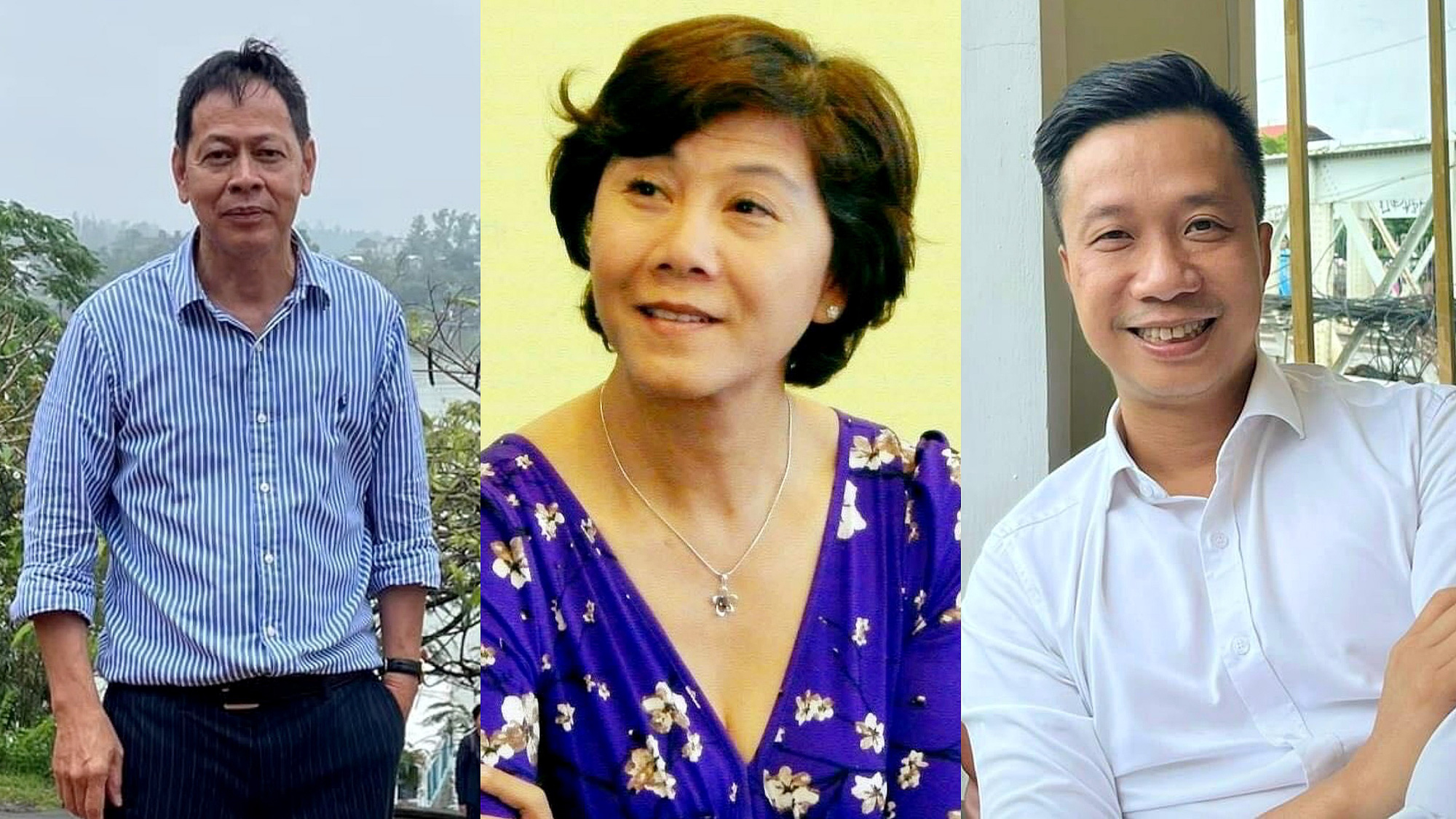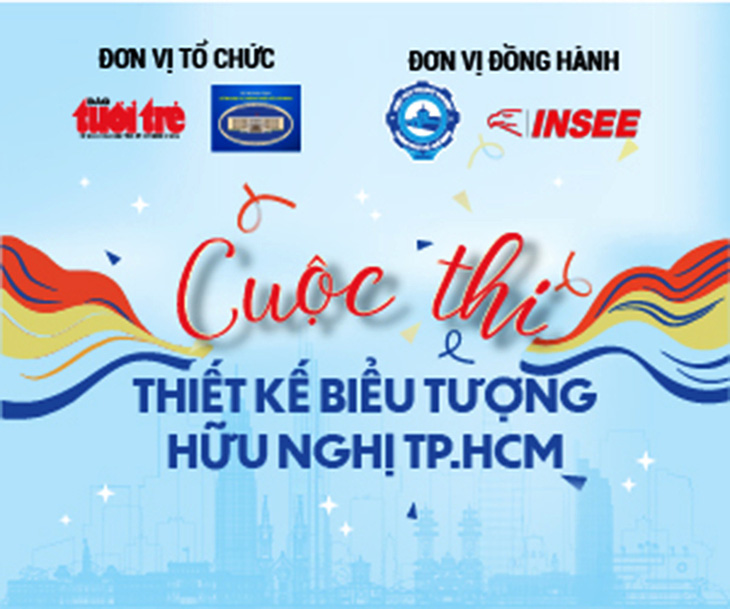Creating a symbol of Ho Chi Minh City’s present-day camaraderie is, in essence, a project aimed at shaping its future. The city is also delving into the spiritual history of this historic metropolis.
The Ho Chi Minh City Department of External Relations, Tuoi Tre (Youth) newspaper, the Ho Chi Minh City Business Association, and INSEE Cement Company have jointly organized the Ho Chi Minh City Friendship Symbol Design Contest.
Tuoi Tre, along with experts and cultural researchers, are exploring the socio-cultural landscape of Ho Chi Minh City in search of an appropriate symbol.
Adequate conditions for installation of friendship symbol
Currently, Ho Chi Minh City boasts several traditional landmarks regarded as the city’s symbols. However, architect Nguyen Truong Quy asserts that the city requires a fresh emblem.
“Those existing landmarks hold multifaceted significance, contributing to creating a specific symbolic identity at various points in time,” Quy said.
“However, there is a perpetual need to forge a new symbol that resonates with contemporary life and fosters greater connections among people."
Researcher Nguyen Duc Hiep underscores that Ho Chi Minh City possesses all the essential elements and foundations to construct an emblem that encapsulates the spirit of friendship and collaboration with other cities in diplomacy, commerce, and culture.
This is due to the city’s historical legacy of being an open, welcoming destination for immigrants and its tradition of embracing diverse cultures, allowing them to meld and flourish together in this new homeland since its inception.
Keywords
From the perspective of cultural and historical research, Dr. Nguyen Thi Hau emphasized the significance of preserving tradition amidst the city’s modernity in symbol design. She emphasized that this tradition has been steadfastly maintained over generations. Notably, Ho Chi Minh City continues to be a destination for both domestic and international migrants, underscoring its rich historical and cultural heritage.
Beyond its thriving economy, the city’s allure is deeply rooted in its culture, traditions, way of life, and the interpersonal dynamics between its residents, extending to the realms of business and trade. Dr. Hau suggests that four keywords can serve as reference points for designing a symbol for present Ho Chi Minh City: modern, dynamic, meaningful, and traditional.
“The design for Ho Chi Minh City’s symbol need not be exclusively tied to a particular architectural structure or individual,” Hau said.
“Opting for a natural image as a symbol is also a valid and worthy idea.”
Researcher Nguyen Duc Hiep further expounded that the city’s inhabitants exhibit a pragmatic and open-minded approach, consistently applying innovative and creative ideas to their lives. In light of this spirit, Hiep hopes that the design for a new friendship symbol will mirror the open and tolerant nature of a global city.
Quy drew inspiration from his visit to Namsan Tower, a recognized symbol of Seoul, South Korea, where he witnessed numerous young visitors. The tower not only offers a panoramic view of Seoul from its observatory but also features a platform adorned with love locks and signs indicating distances to other cities worldwide, including Hanoi and Ho Chi Minh City in Vietnam.
“There are various methods to design a friendship symbol,” Quy said.
“It can be a single design or a series of designs, provided it showcases the beauty of this city in the current context.”
Quy also posed a question regarding the concentration of cultural and heritage symbols in the central area, contrasting with the relative lack of highlights in other parts of the city.
“Should the design of this symbol create a space that fosters connections between the central area’s residents and those in other regions of the city, in response to the spirit of friendship?” the architect wondered.
“Designs should steer clear of the trap of being overly formal and should strive to break free from clichéd imitations or replicas of common shapes, such as lotus flowers and dragons, which are already quite prevalent,” Quy suggested.
“These symbolic elements ought to be infused with emotional depth and conveyed through a thoughtfully expressive language, eschewing any superficial representations.”
Avoiding shortcomings
Recently, many prominent structures in various localities have faced public scrutiny regarding their esthetic appeal.
Dr. Hau emphasizes that for a project to hold symbolic significance and garner consensus among members of the public, the symbol must embody a lasting impression. She asserts that something that changes with the times and lacks longevity cannot be deemed a true symbol.
From a historical and cultural perspective, Hau delineates sustainability through two key facets.
First, it lies in the city’s inherent natural characteristics, and second, it resides in its cultural and traditional attributes. When these elements intertwine with artistic beauty, the project can avoid feeling inauthentic.
Concerning notions of beauty, these are subjective, varying from person to person. The critical factor is that a symbol, be it an architectural creation, should evoke a sense of familiarity and truly encapsulate the essence of Ho Chi Minh City.
“This doesn’t mean it has to be a literal representation,” Hau further emphasized.
“A beautiful symbolic work is not necessarily a literal one.”
Quy shares a similar viewpoint, stating that beauty is a variable concept with infinite interpretations.
He goes on to explain that architectural works include four essential elements: function, materials (reflecting the materials of the era and the advancements of that period), economics, and esthetics. Proposed designs should meet the requirements of all these four facets.
Quy also underscored that constrained spaces cannot accommodate excessively large structures, and antiquated architectural styles may not align with contemporary messages and contexts. The design should create an ideal esthetic environment and demonstrate the evolution of the times.
|
|
The Ho Chi Minh City Friendship Symbol Design Contest runs from October 27 to December 27, 2023.
We welcome submissions from our readers to bieutuonghuunghi@tuoitre.com.vn. The submission timestamp will be determined based on the time the email is sent.






















































